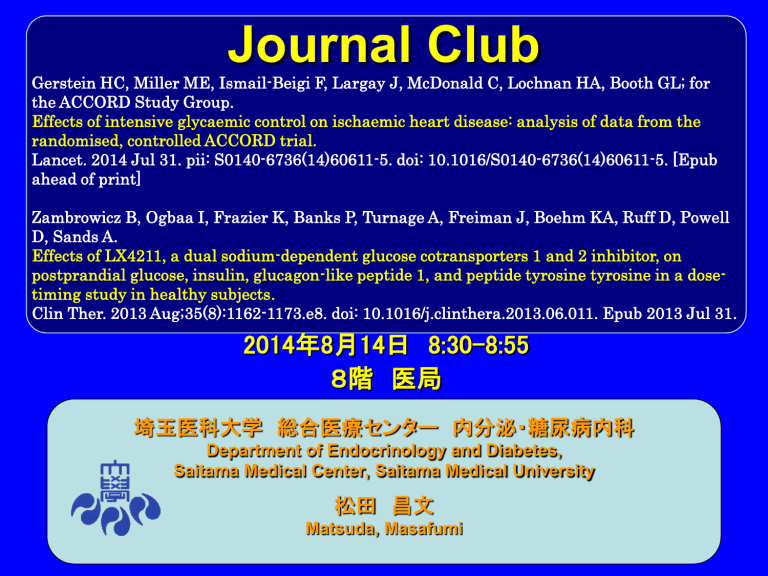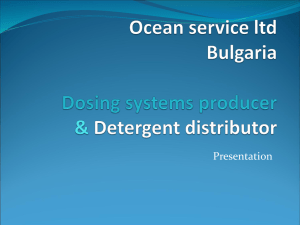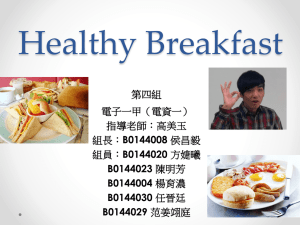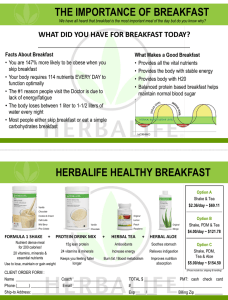20140814LX4211&ACCORD

Journal Club
Gerstein HC, Miller ME, Ismail-Beigi F, Largay J, McDonald C, Lochnan HA, Booth GL; for the ACCORD Study Group.
Effects of intensive glycaemic control on ischaemic heart disease: analysis of data from the randomised, controlled ACCORD trial.
Lancet. 2014 Jul 31. pii: S0140-6736(14)60611-5. doi: 10.1016/S0140-6736(14)60611-5. [Epub ahead of print]
Zambrowicz B, Ogbaa I, Frazier K, Banks P, Turnage A, Freiman J, Boehm KA, Ruff D, Powell
D, Sands A.
Effects of LX4211, a dual sodium-dependent glucose cotransporters 1 and 2 inhibitor, on postprandial glucose, insulin, glucagon-like peptide 1, and peptide tyrosine tyrosine in a dosetiming study in healthy subjects.
Clin Ther. 2013 Aug;35(8):1162-1173.e8. doi: 10.1016/j.clinthera.2013.06.011. Epub 2013 Jul 31.
2014年8月14日 8:30-8:55
8階 医局
埼玉医科大学 総合医療センター 内分泌・糖尿病内科
Department of Endocrinology and Diabetes,
Saitama Medical Center, Saitama Medical University
松田 昌文
Matsuda, Masafumi
Median Glycated Hemoglobin Levels at Each Study Visit
The Action to Control Cardiovascular Risk in Diabetes
Study Group. N Engl J Med 2008 ;358:2545-2559
Kaplan-Meier Curves for the Primary Outcome and
Death from Any Cause
The prespecified primary outcome of ACCORD was the first occurrence of non-fatal myocardial infarction, non-fatal stroke, or cardiovascular death, defined as death that was unexpected or presumed to be due to cardiovascular disease, congestive heart failure, myocardial infarction, stroke, other cardiovascular disease, a study procedure, or arrhythmia.
NS (P=0.16)
P=0.04
Hazard Ratios for the
Primary Outcome and
Death from Any
Cause in Prespecified
Subgroups
The Action to Control Cardiovascular Risk in
Diabetes Study Group. N Engl J Med
2008;358:2545-2559
N Engl J Med 2011;364:818-28
非致死性心筋梗塞 虚血性心疾患
脳卒中
死亡
Lancet 2009; 373: 1765 –72
1.
Department of Medicine and Population Health Research Institute, McMaster University and Hamilton Health
Sciences, Hamilton, ON, Canada
2.
Department of Biostatistical Sciences, Division of Public Health Sciences, Wake Forest School of Medicine,
Winston-Salem, NC, USA
3.
Case Western Reserve University and Cleveland VA Medical Center, Cleveland, OH, USA
4.
Department of Medicine, University of North Carolina, Chapel Hill, NC, USA
5.
St Joseph's Health Care London, Schulich School of Medicine, Western University, London, ON, Canada
6.
Ottawa Hospital Research Institute, University of Ottawa, Ottawa, ON, Canada
7.
Li Ka Shing Knowledge Institute, St Michael's Hospital, Toronto, ON, Canada www.thelancet.com Published online August 1, 2014 http://dx.doi.org/10.1016/S0140-6736(14)60611-5
Background
Hyperglycaemia could substantially increase the risk of ischaemic heart disease in patients with type 2 diabetes. We investigated whether intensive lowering of glucose concentrations affects risk.
The reduced rate of ischaemic heart disease in
ACCORD was not explored. Here we report the effects of the ACCORD glucose-lowering interventions on indices of ischaemic heart disease, including fatal and non-fatal myocardial infarction and unstable and new-onset angina, and the degree to which change in HbA
1c concentration accounts for any of these effects.
Lancet 2009 年のメタ解析ありますが???
Methods
We assessed 10 251 adults aged 40–79 years with established type 2 diabetes, mean glycated haemoglobin A1c (HbA1c) concentration of 67 mmol/mol
(8·3%), and risk factors for ischaemic heart disease enrolled in the ACCORD trial. Participants were assigned to intensive or standard therapy (target HbA1c less than 42 or 53 –63 mmol/mol [less than 6·0% or 7·0–
7·9%], respectively). We assessed fatal or non-fatal myocardial infarction, coronary revascularisation, unstable angina, and new angina during active treatment
(mean 3·7 years) plus a further mean 1·2 years. This trial is registered with ClinicalTrials.gov, number
NCT00000620.
Table. Ischaemic heart disease risk factors and event rates
Data are mean (SD) or number (%) unless otherwise stated.
HbA1c=glycated haemoglobin A1c.
ACE=angiotensin-converting enzyme.
ARB=angiotensin-receptor blocker.
SBP=systolic blood pressure.
DBP=diastolic blood pressure.
*Time from randomisation to occurrence of primary outcome, censoring date, or last day before treatment transition.
†Time from randomisation until initial occurrence of primary outcome, censoring date, or exit visit.
Results
Myocardial infarction was less frequent in the intensive than in the standard therapy group during active treatment (hazard ratio [HR] 0·80, 95% CI 0·67–0·96; p=0·015) and overall (0·84, 0·72–0·97; p=0·02).
Findings were similar for combined myocardial infarction, coronary revascularisation, and unstable angina (active treatment HR 0·89, 95% CI 0·79–0·99, overall 0·87
0·79–0·96) and for coronary revascularisation alone
(0·84, 0·75–0·94) and unstable angina alone (0·81,
0·67–0·97) during full follow-up. With lowest achieved
HbA1c concentrations included as a time-dependent covariate, all hazards became non-significant.
Interpretation
Raised glucose concentration is a modifiable risk factor for ischaemic heart disease in middle-aged people with type 2 diabetes and other cardiovascular risk factors.
Funding
National Heart, Lung, and Blood Institute,
National Institute of Diabetes and Digestive and
Kidney Diseases, National Institute on Aging,
National Eye Intitute, and Centers for Disease
Control and Prevention.
The findings together suggest that early intensive glucose lowering (target HbA
1C concentration lower than 53 mmol/mol [7·0%]) in patients with diabetes combined with intensive treatment of other risk factors is likely to result in long-term reductions in cardiovascular disease.
Further assessment of the risks and benefits is required. In the meantime, it is probably wise to aim for a target HbA
1C concentration of less than 64 mmol/mol
(8·0%) in patients older than 65 years with comorbidities.
Message
ACCORD 研究 はおそらく 低血糖 のせい( 試験 では
低血糖 が 原因 としないように)で 死亡 が 増 えたと
いうことで 有名 であるが、
血糖 を 管理 した 群 で 虚血性心疾患 は2 割減 !
( 虚血性心疾患 のデ ー タは 発表 されていなかった
らしい???)
JDOIT-3の 結果 が 期待 される。
選択的SGLT2阻害剤
国内で承認済又は開発中の主なSGLT2阻害剤(2014年5月現在)
トホグリフロジン
Et
HO
O
O
HO
OH
OH
カナグリフロジン
Me
O
S
HO
HO OH
OH
F
エンパグリフロジン
Me O
O
HO
O
HO
OH
OH
ダパグリフロジン
CI OEt
O
HO
HO OH
OH
イプラグリフロジン
F
O
HO
HO OH
S
OH
フロリジン
ルセオグリフロジン
MeO Me OEt
S
HO
HO OH
OH
Liu JJ et al.:Diabetes 61(9):2199,2012より改変
New Current 24(15):2,2013より改変
SGLT-2 阻害薬の効果
8,0
7,5
FPG(mg/dL)
HbA1c(%)
160
150
7,0 140
6,5 130
6,0 120
5,5 110
5,0 100
205.5 308.3 205.5 411.0 205.5 308.3 205.5 205.5 円/日
添付文書データを標準化補正 (HbA1c8% 、 FPG200mg/dL を )
FPG and MEAN BG (CGM)
135
130
125
120
115
110
FBG
Mean PG (CGM)
105
100
Luseogliflozin
2.5mg
Luseogliflozin
5mg ipragliflozin
50mg ipragliflozin
100mg dapagliflozin
5mg dapagliflozin
10mg tofogliflozin
20mg(2nd) canagliflozin
100mg
205.5 308.3 205.5 411.0 205.5 308.3 205.5 205.5 円/日
SGLT-2 阻害薬服薬停止後の空腹時尿糖 last dose mg/gCr off 1st
18000
16000
14000
12000 off 2nd off 3rd
10000
8000
6000
4000
2000
0 luseogliflozin 2.5mg
luseogliflozin 5mg ipragliflozin 50mg ipragliflozin 100mg dapagliflozin 5mg dapagliflozin 10mg tofogliflozin 20mg canagliflozin 100mg
Diamant M, Morsink LM.: SGLT2 inhibitors for diabetes: turning symptoms into therapy.
Lancet. 2013 Jul 11. doi:pii: S0140-6736(13)60902-2. 10.1016/S0140-6736(13)60902-2.
[Epub ahead of print]
Background
LX4211 is a first-in-class dual inhibitor of sodiumdependent glucose cotransporters 1 and 2
(SGLT1 and SGLT2). SGLT1 is the primary transporter for glucose absorption from the gastrointestinal tract, and SGLT2 is the primary transporter for glucose reabsorption in the kidney.
SGLT1 inhibition reduces postprandial glucose
(PPG) levels and increases the release of gastrointestinal peptides such as glucagon-like peptide 1 (GLP-1) and peptide tyrosine tyrosine
(PYY), whereas SGLT2 inhibition results in increased urinary glucose excretion (UGE).
Purpose
This study evaluated how timing of dose relative to meals changes the pharmacodynamic (PD) effects of
LX4211 treatment, including effects on UGE, fasting plasma glucose, PPG, insulin, total and active GLP-1, and PYY. The safety and tolerability of LX4211 in healthy subjects were also assessed.
Methods:
This was a randomized, double-blind, placebo-controlled, multiple-dose study to determine the PD effects of
LX4211 dose timing relative to meals in 12 healthy subjects. Blood and urine were collected for the analysis of PD variables.
Figure 2.
Least-squares mean 24-hour urinary glucose excretion (UGE). (A) Dosing 1 hour before breakfast. (B) Dosing 0.5 hour before breakfast. (C) Dosing immediately before breakfast. (D) Dosing immediately before lunch. (E) Dosing a split dose 1 hour before breakfast and dinner. Error bars represent SEM. UGE was significantly elevated for all doses relative to baseline (day −1) and for the pooled LX4211 doses relative to placebo (P < 0.001 for all comparisons).
Figure 3. Pharmacodynamic effects of LX4211 dosing schedules on gastrointestinal peptides relative to placebo. (A) Before breakfast dosing relative to placebo for total glucagon-like peptide 1 (GLP-1). (B) Before breakfast dosing relative to placebo for active GLP-1. (C) Before breakfast dosing relative to placebo for peptide tyrosine tyrosine (PYY). (D) Immediately before breakfast versus immediately before lunch dosing relative to placebo for total GLP-1. (E) Immediately before breakfast versus immediately before lunch dosing relative to placebo for active GLP-1. (F) Immediately before breakfast versus immediately before lunch dosing relative to placebo for PYY. (G) Immediately before breakfast versus split dosing relative to placebo for total GLP-1. (H) Immediately before breakfast versus split dosing relative to placebo for active GLP-1. (I)
Immediately before breakfast versus split dosing relative to placebo for PYY. SGLT-1 = sodium-dependent glucose cotransporter 1. Error bars represent SEM.
Figure 4.
Pharmacodynamic effects of
LX4211 dosing schedules on glucose and insulin relative to placebo. (A) Before breakfast dosing relative to placebo for glucose. (B) Before breakfast dosing relative to placebo for insulin. (C) Immediately before breakfast versus immediately before lunch dosing relative to placebo for glucose. (D)
Immediately before breakfast versus immediately before lunch dosing relative to placebo for insulin, (E) Immediately before breakfast versus split dosing relative to placebo for glucose.
(F) Immediately before breakfast versus split dosing relative to placebo for insulin. Error bars represent SEM.
Results
Twelve healthy subjects 30 to 51 years of age were enrolled and treated. Treatment with LX4211 resulted in significant elevation of total and active GLP-1, and PYY while significantly decreasing PPG levels relative to placebo, likely by reducing SGLT1-mediated intestinal glucose absorption.
Comparisons performed among the dosing schedules indicated that dosing immediately before breakfast maximized the PD effects of LX4211 on both SGLT1 and
SGLT2 inhibition. The comparative results suggested distinct
SGLT1 effects on GLP-1, PYY, glucose, and insulin, which were separate from SGLT2-mediated effects, indicating that
SGLT1 inhibition with LX4211 may be clinically meaningful.
All treatments were well tolerated with no evidence of diarrhea with LX4211 treatment.
Conclusions
This clinical study indicates that dosing of LX4211 immediately before breakfast maximized the PD effects of both SGLT1 and SGLT 2 inhibition and provided a convenient dosing schedule for future trials. LX4211 was safe and well tolerated and, due to its SGLT1 inhibition, produced strong PPG reductions and low UGE relative to selective SGLT2 inhibitors. LX4211 may provide a promising new therapy for patients with type 2 diabetes mellitus. The potential long-term clinical benefits and safety of LX4211 treatment will need to be confirmed in large clinical trials.
ClinicalTrials.gov identifier: NCT01334242.
Message
SGLT-2 阻害薬 にSGLT-1 阻害特性 のあるLX4211も
加 わりそうである。
GLP-1 増加 はSGLT-2 阻害薬 にもあるので 機序 は 今
後 の 課題 。








